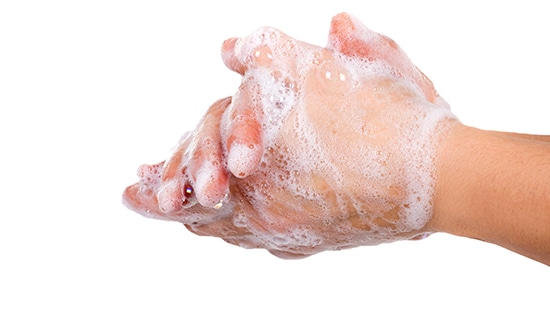Raising the Importance of Hygiene in Accelerated Vaccine Manufacturing
It’s important to reflect on the demands the vaccine manufacturing industry faced over the past year

This article appeared on Pharmamanufacturing.com
As many begin to see the positive impact that a COVID-19 vaccine makes on our personal lives, it’s important to reflect on the demands the vaccine manufacturing industry faced over the past year to effectively scale development and help address the global pandemic. In doing so, many parts of a Good Manufacturing Practice (GMP) environment are being re-assessed and potentially modified to ensure that safety and quality remain consistent.
Changes to manufacturing equipment, personnel flow/hygiene practices, create an increased need for cleaning and disinfecting agent sourcing options, and formal change control measures may all contribute to a pharmaceutical manufacturer’s ability to scale up successfully.
The safety of employees and quality of final products are important outcomes that should not be negatively impacted by faster pace in the working environment. Modifications may be needed to the systems and procedures in place to match increased demand.
The Human Factor
A manufacturing environment that changes significantly will impact human behavior. Even with a higher sense and awareness of maintaining consistency, humans can be sources as well as recipients of behavior that influences hygienic practices. Most of the recommended hygienic practices for the public during this pandemic apply well to anyone working in a manufacturing facility.
Areas for hand hygiene are often shared by operators and non-production workers (including contractors) increasing the risk of cross contamination, and therefore the need for frequent washing of hands and use of hand sanitizers (as per the facility’s protocols).
Restrictions for entry into relevant manufacturing areas should be visible (e.g. signage), and personnel with ill health conditions should not enter manufacturing areas. The current pandemic concerns also carry recommendations for individuals to wear masks and maintain safe distancing, irrespective of vaccinated status. Good health and good hygienic practices are necessary in any pharmaceutical manufacturing environment.
Another important parameter that can enhance hygienic practices is proper protective equipment, such as area/activity-appropriate gowning and use of gloves. Sterile gowns and gloves are required in cleanrooms, but the frequency of changing personnel gowns and gloves is not easily followed in a scaled-up operation. In the scaled-up environment it is important to re-assess when and how to change gloves and gowns, and that training and procedures for operators (especially cleanroom operators) are explicit. Areas where reusable gowns or lab coats are required should be assessed for modification to prevent individual to individual cross-contamination from occurring. It would also be sensible to increase scrutiny of contractor gowning practices, which can be another source of cross-contamination in non-sterile areas.
On the Plant Floor
The production areas and supporting areas in a manufacturing facility are part of the infrastructure designed to ensure the GMP environment protects the products being manufactured. There are many different models being used for COVID-19 vaccine manufacturing around the world. Every site that performs any manufacturing step, from formulation to finish-fill to storage, is expected to have a well-defined, efficient and effective cleaning and disinfection program. If manufacturing processes are changed in any way, including the use of new equipment and or a different material and/or personnel flow, a re-assessment of the cleaning and disinfection program is recommended to ensure that aspect of the contamination control strategy is still effective. A standardized change control process can document this.
An important early step in any scale-up activity is to ensure that your supply chain can support increased cleaning and disinfection product demand. Secondary suppliers are a necessary reality for raw materials in the pharmaceutical industry, and in the current circumstance, the same now applies for cleaning agents and disinfectants.
Looking at the options for use of different large surface decontamination methods may be helpful if the facility is bringing in a new type of product (e.g. vaccine) or will be alternating between two different product types. New construction of any size may also take into consideration methods of decontamination that are more rapid, automated and can be validated (e.g. peroxide vapor).
If small surface decontamination is re-assessed due to changes in equipment or process, consider different methods of manual cleaning and disinfection, such as saturated wipes instead of dry wipes and spray. Advice on regimes for cleaning and disinfection can be given by your reputable disinfectant supplier.
Without proactive management, the GMP systems in place are put under strain as manufacturing demand increases. Along with the cleaning and disinfection program, other areas should be considered ahead of time when process changes are going to occur. Documentation practices, handling and labeling of materials, increased flow of personnel, waste removal, calibrations, and many other GMP-oriented activities can easily become a compliance challenge if not considered early in a risk assessment.
Overall, it is prudent to take the time to assess potential and real changes to the operation and the personnel that support the operation. Time is always in demand, yet the quality of product from your operation and the safety of your personnel are the intended outcomes. Good preparation, communications and time for assessment will enhance achieving the required outcomes.



